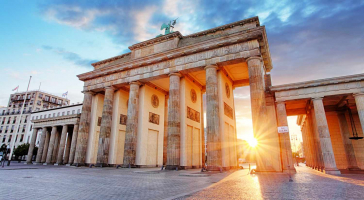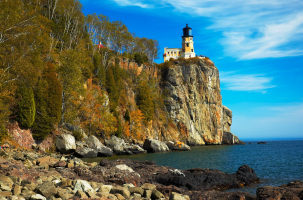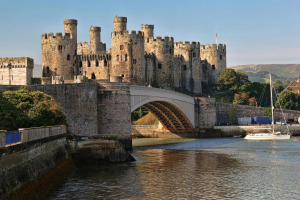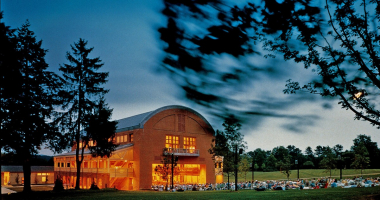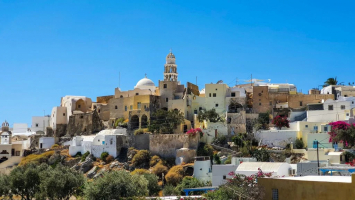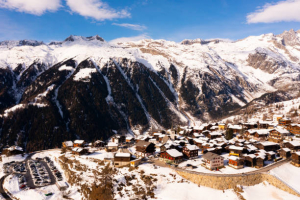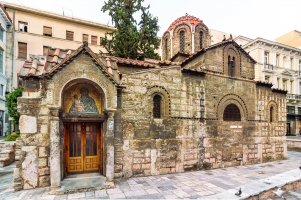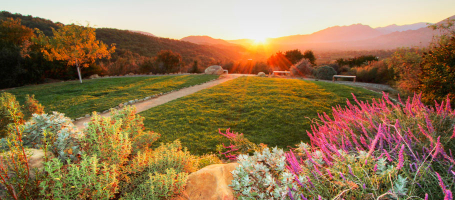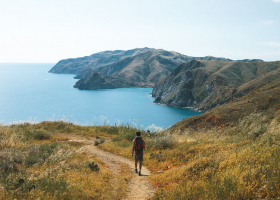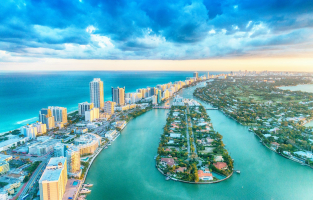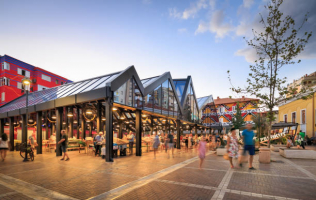Top 10 Best Things to Do in Devon
Devon has access to the countryside, the seaside, historic ruins, modern retail malls, great festivals, and just about everything else you can think of. It's ... read more...ideal for kids, couples, parties, and business visits; whatever you want to do during your stay, you'll discover a plethora of attractions and activities around the region. And there are the best things to do in Devon.
-
The Valley of Rocks, sometimes known as the Valley of the Rocks, is a dry valley in north Devon, England, about 1 kilometer (0.6 mi) west of the settlement of Lynton. It is a renowned tourist site known for its wild goat herd, as well as its environment and geology. The Valley of the Rocks is a lovely U-shaped valley that is only a 10-minute walk from Lynmouth. It is home to a few free-roaming wild goats, and you are encouraged to walk up the valley's steep cliffs for stunning views of the Celtic Sea.
The valley contains excellent exposures of the Lynton Beds (officially the 'Lynton Formation,' which are among the earliest Devonian rocks in north Devon and are rich in fossils. The periglacial structures developed while this area was near the limit of glaciation during the last Ice Age are also noteworthy. The valley is said to have formed as a result of the dissection of a previous extension of the East Lyn River valley, which now reaches the sea at Lynmouth, by coastal cliff recession. Because the walk can be muddy and bumpy at times, with tiny rocks along the way, it's advisable to wear covered shoes for comfort. Stop into Mother Meldrum's Café if you need a break from your hike. It is located in the valley's center and serves a range of handmade snacks.
Location: Valley Of Rocks Exmoor National Park, Lynton EX35 6JH
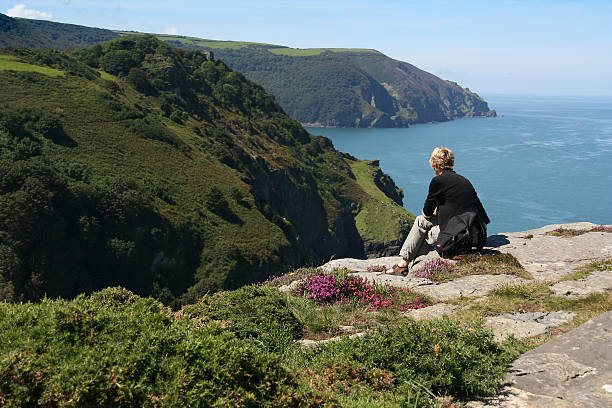
istockphoto 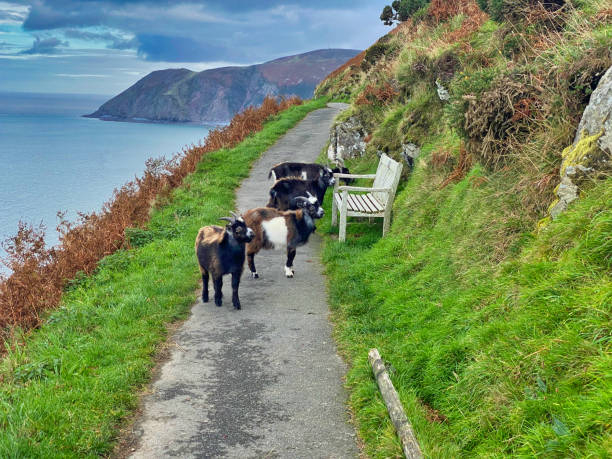
istockphoto -
The Greenway House is near Brixham and is popular with followers of award-winning mystery author Agatha Christie. It was formerly her vacation house, but it is now a museum displaying her personal items and book collection. A walled garden with a huge grass and several rare species is available. For prospective pianists, the family's original Steinway Piano may be found right in the centre of the Drawing Room. You may occasionally hear a volunteer pianist performing, or if you ask, you may be permitted to play a song of your own. Greenway's casual gardens are serene and pleasant, with everything from walled gardens to riverbank woods.
There are hidden jewels such as a restored vinery and peach house, breathtaking views down river, and deckchairs in front of the home to relax on. A journey to Greenway would be incomplete without a visit to the bottom of the garden and the Boathouse. One of Greenway's most serene areas and the setting for Poirot's Dead Man's Folly.
Location: Greenway Road, Galmpton, Brixham TQ5 0ES
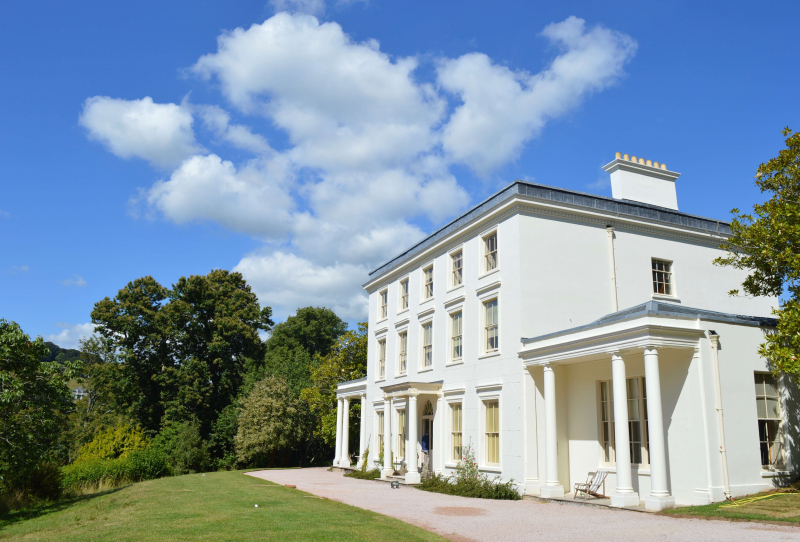
squaremeal.co.uk 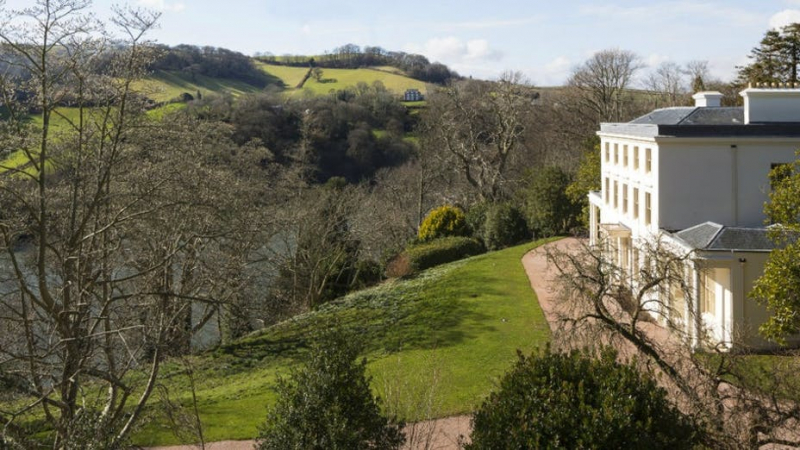
squaremeal.co.uk -
The Dartmoor National Park is the English national park authority in charge of Dartmoor in Devon. It was established in its current form in 1997, succeeding a Devon County Council committee (from 1951 to March 1974) and the Dartmoor National Park Committee (from 1 April 1974). Dartmoor National Park is a huge moorland that covers approximately 368 square miles. The park, which offers activities like as horseback riding, canoeing, and even bouldering, is suitable for people of all ages, including families with little children. Dartmoor is teeming with life as diverse as its scenery. Dunlins, tiny wading birds, and golden plovers use mossy bogs for nesting.
Skylarks, red grouse, lizards, and adders live on upland heaths, which are covered in heather and gorse. Rhôs meadow, the moist valley bottoms, are home to butterflies and birds, as well as bigger creatures like as foxes and roe deer. The moors are also well-known for ponies owned by local farmers and released to graze throughout the season. Dartmoor National Park features a number of visitor centers where you may meet the volunteers and rangers. The park is notorious for its shifting weather and heavy mists, so carry a waterproof jacket and a pair of safety boots with you when you come.
Location: B3212, Near Bellever Tor, Dartmeet PL20 6SG
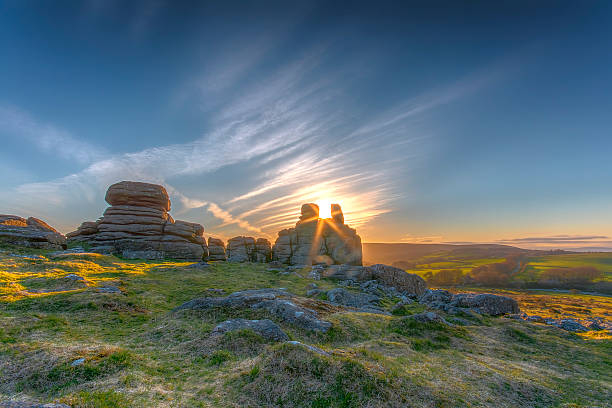
istockphoto 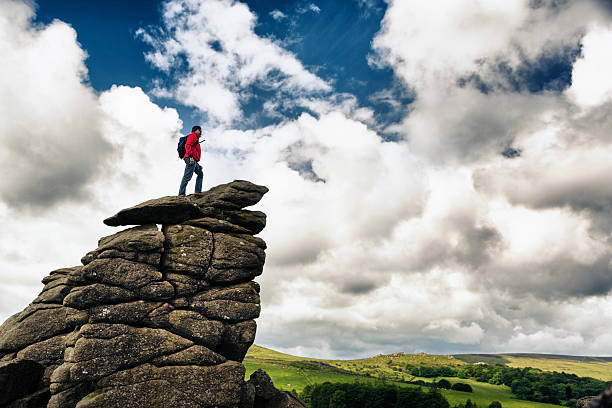
istockphoto -
Exeter Cathedral, officially known as the Cathedral Church of Saint Peter in Exeter, is an Anglican cathedral in the city of Exeter, Devon, in Southwest England, and the seat of the Bishop of Exeter. The current structure, which was completed in 1400, has numerous significant characteristics, including an early set of misericords, an astronomical clock, and the world's longest unbroken medieval stone vaulted ceiling. Exeter Cathedral has England's longest unbroken vaulted ceiling and offers four public mass services each Sunday. On certain Tuesdays and Saturdays, you may join a roof tour that will take you up to the top for a beautiful perspective of Exeter.
The misericords, minstrels' gallery, astronomical clock, and organ are notable interior elements. The multiribbed ceiling and compound piers in the nave arcade are notable internal architectural characteristics. There is a lot of 14th-century glass in the Great East Window, and there are over 400 ceiling bosses, one of which portrays Thomas Becket's death. The bosses may be seen at the vaulted ceilings pinnacle, connecting the ribs. The nave's minstrels' gallery, which dates from circa 1360, is unique among English cathedrals. Its front is adorned with 12 carved and painted angels playing medieval musical instruments such as the cittern, piper, hautboy, crwth, harp, trumpet, organ, guitar, tambourine, and cymbals, as well as two more whose identities are unknown.
Location: 1 The Cloisters, Exeter EX1 1HS
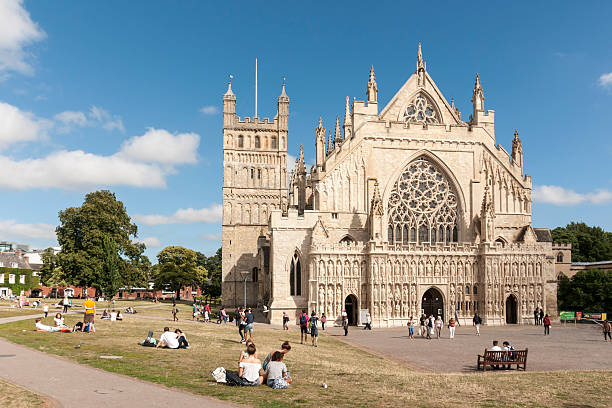
istockphoto 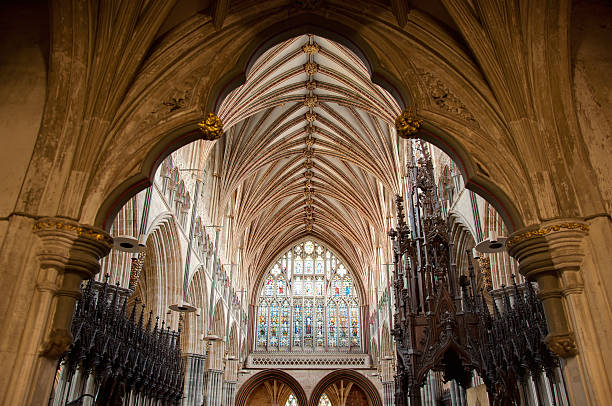
istockphoto -
The Lynton and Lynmouth Cliff Railway is a water-powered funicular railway that connects the twin towns of Lynton and Lynmouth on North Devon's rocky coast in southwest England. A steep hill separates Lynton and Lynmouth, making it difficult for people and products to cross between them. In the late 1800s, there was interest in constructing a funicular or cliff lift to connect them. George Croydon Marks, a civil engineer, was instrumental in both its design and obtaining funding from his business partner, Sir George Newnes. During the early decades of operation, local contractor Robert Jones was engaged in the design of the funicular's revolutionary braking mechanism, as well as the line's construction and maintenance.
Construction began in 1887, and a year later, the Lynmouth & Lynton Lift Company was granted permission to operate it by an Act of Parliament. The finished railway opened on Easter Monday 1890 and has been in service ever since. While it was first meant to transport freight, the funicular railway proved popular with visitors and was mostly utilized for passenger transit. In 1947, its flat platforms were transformed into passenger trains. It is the world's tallest and steepest operational water-powered cliff railway. At the end of your ride, the lovely Cliff Top Café awaits you, where you can enjoy the stunning views of Lynmouth Bay while savoring their classic scones with clotted cream and jam served with tea. Tickets are available for purchase at either station, with discounted tickets for children under 13 years of age.
Location: The Esplanade, Lynmouth EX35 6EQ
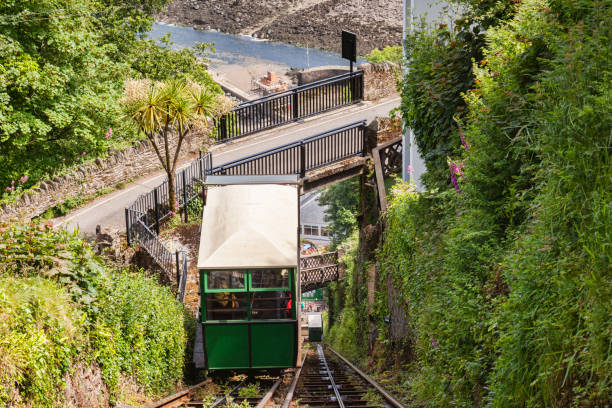
istockphoto 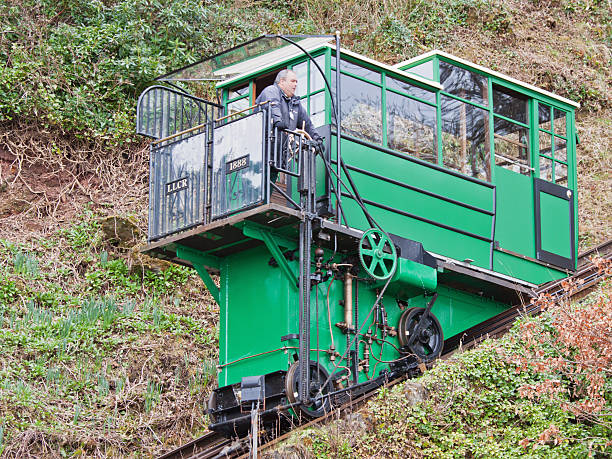
istockphoto -
Dartmouth Castle is an artillery fort in Devon, England, designed to guard Dartmouth Harbour. The first elements of the castle originate from the 1380s, when city officials built a small enclosure fortress commanding the mouth of the Dart River in response to a French raid. This was built to combat enemy ships with catapults and maybe early guns, and it housed the local chapel of Saint Petroc. The castle was enlarged at the end of the 15th century with an artillery tower and an iron chain that could be stretched across the harbour to a tower at Godmerock; this addition established Britain's earliest known purpose-built coast artillery fort.
After years of disuse in the early nineteenth century, the castle was renovated with modern weaponry in 1859, although guarding Dartmouth's port was no longer a military priority. The castle was considered obsolete by the government by the early twentieth century, and it was opened to tourists. It was reintroduced into service during WWII, but it was ultimately decommissioned in 1955. English Heritage manages it in the twenty-first century, and the castle attracted 37,940 visits in 2007. If you're feeling daring, you may take a boat out to see the magnificent castle from afar. Keep a look out for animals along the South Devon shoreline.
Location: Castle Road, Dartmouth TQ6 0JN
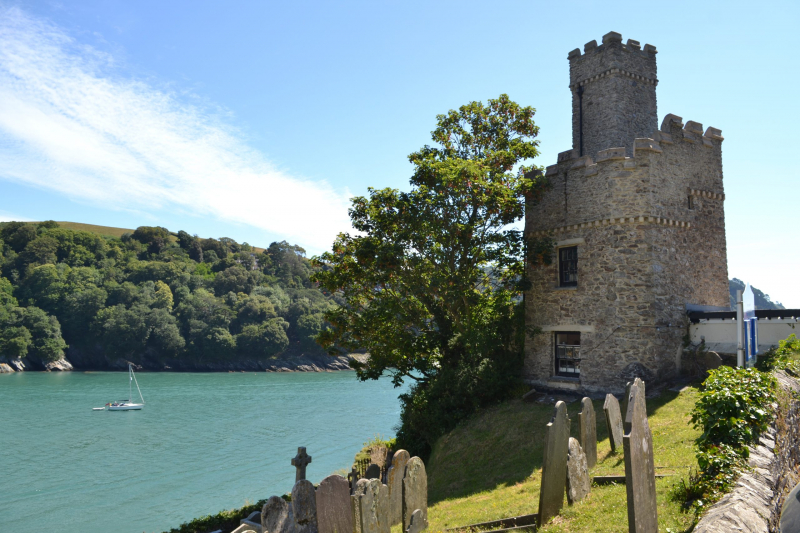
istockphoto 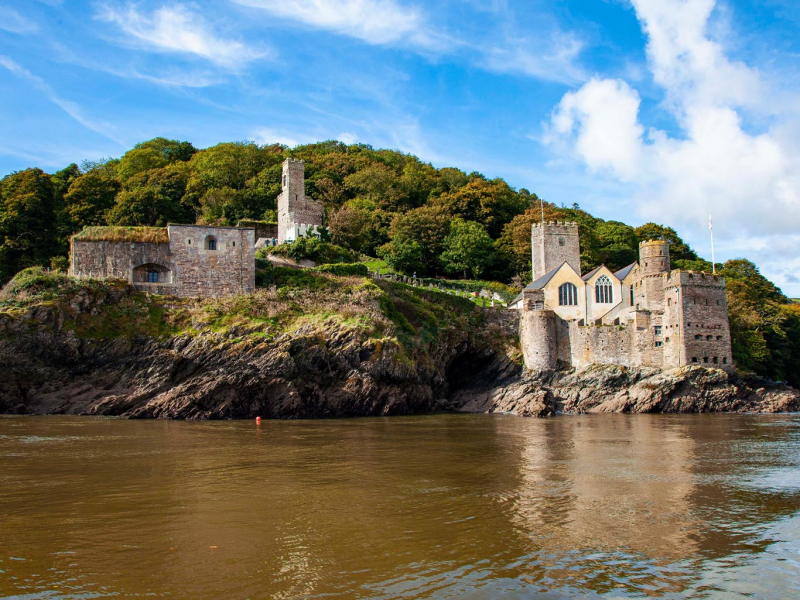
istockphoto -
The National Marine Aquarium at Britain's Ocean City Plymouth is the country's largest aquarium. It is home to nearly 4,000 creatures and has performed "groundbreaking" ocean conservation work, as well as providing a range of chances for all ages to learn about the marine environment through ocean education. The marine aquarium is near the Barbican and the fish market at Sutton Harbor. It first opened its doors in May 1998, with the altruistic goals of study, teaching, and conservation. It is a member of the British and Irish Zoos and Aquariums Association (BIAZA).
It holds about 4,000 aquatic creatures and is divided into four zones to represent diverse maritime ecosystems. There are 5 shark species and a resident green turtle named Friday. The National Marine Aquarium is an excellent place to go on rainy days since you can stay dry while admiring the aquatic creatures. The aquarium also organizes a special 'Quiet at The Museum' event to give people with sensory concerns with a more pleasant visit. This happens three times a year after regular visiting hours, and tickets are offered online at a discounted price.
Location: Rope Walk, Coxside, Plymouth PL4 0LF
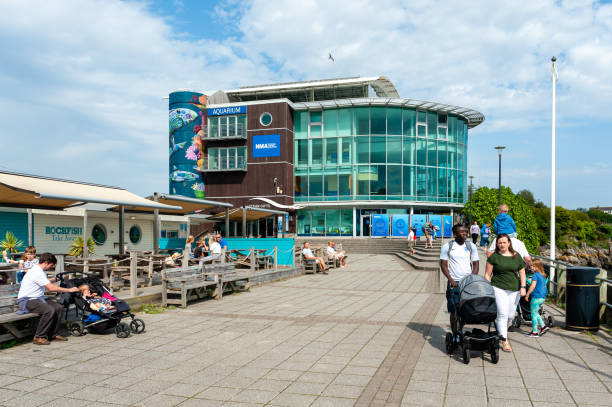
istockphoto 
istockphoto -
Plymouth Gin Distillery is a historic gin distillery in the city center that is still in use today. It is the sole gin distillery in the city and is also known as the Black Friars Distillery. The old structure faces what is now Southside Street. They take delight in producing their spirits using the original 1793 formula. The Refectory Cocktail Bar serves handmade cocktails.
There is no evidence to substantiate the local legend that it is housed in what was formerly a Dominican Order monastery founded in 1431. It is also suggested that some of the Pilgrim Fathers may have stopped here while the Mayflower was being repaired before sailing to North America. The ship on the corporate label is considered to have originated here. It was a great merchant's mansion from the 1500s. From 1605 until 1705, the structure served as a jail and a Congregational meeting house.
The distillery provides tours ranging from a 40-minute distillery walkabout and gin tasting to a 2.5-hour master distiller's tour in which you may distil your own gin mix. Bookings are suggested; if you are bringing youngsters under the age of 17, you must notify the distillery in advance.
Location: 60 Southside Street, The Barbican, Plymouth PL1 2LQ
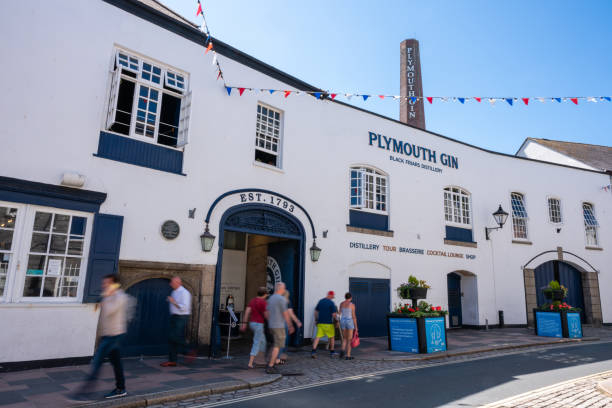
istockphoto 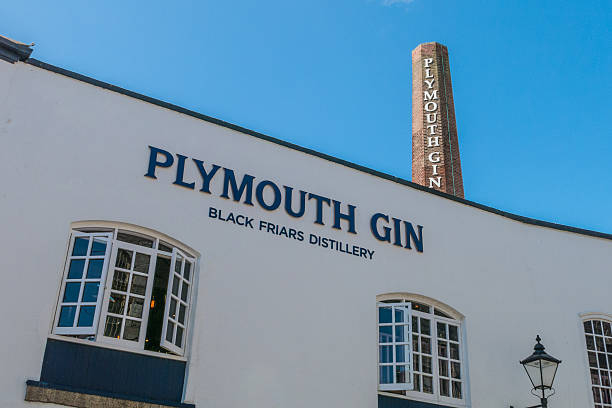
istockphoto -
Brixham Harbour is a fishing port and harbour in Brixham, Devon, England. It has one of the most extensive fishing fleets in the United Kingdom. Brixham Harbour is a prominent South Devon fishing hamlet. The harbour is well-known as one of the UK's major fishing fleet sites, and it also offers an observation deck where you can see over 100 boats go past every day.
The port is divided into two sections: the inner and outer harbours. The inner harbour has trot moorings for roughly 50 yachts up to 35 feet in length. A facsimile of Francis Drake's Golden Hind may be found in the inner harbour. The ship is permanently anchored and serves as a museum ship. The historic fish market is located on the western side of the port. The Old Market House, a Grade II listed structure nearby, is presently utilized as a restaurant. The port is divided into two sections: the inner and outer harbours.
While you're there, don't miss the Golden Hind Museum Ship, a replica of Sir Francis Drake's first ship to sail around the world. Along the port side, there are rows of family-run eateries waiting to feed you fresh seafood harvested by the same fishing boats parked at the harbour.
Location: 5-7, The Quay, Brixham TQ5 8AW
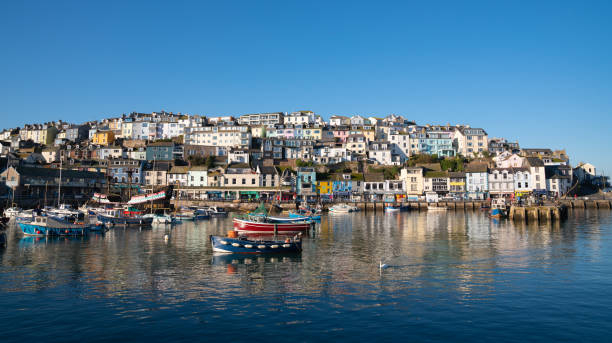
istockphoto 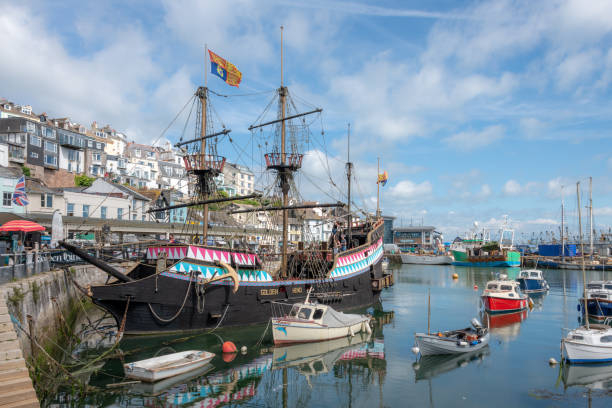
istockphoto -
RHS Garden Rosemoor is a Royal Horticultural Society public demonstration garden in north Devon, England. Rosemoor is located on the A3124 route to Exeter, about 1 mile (1.6 km) south of Great Torrington. The river Torridge runs along the western boundary and is bordered by nearly 100 acres (40 hectares) of woods. A rose garden with over 2,000 rose bushes, an arboretum, herb, fruit, and vegetable gardens, and an alpine chalet are among the features. The garden is named after a clematis cultivar presented as part of the RHS Bicentenary Plant Collection.
The RHS Garden Rosemoor is a 100-acre open garden in the Torridge Valley. It is surrounded by a natural landscape that includes one of the largest rose gardens in Southwest Devon, a fruit and vegetable garden, and a seasonal planting show with a variety of garden flowers. Families with small children are encouraged to enjoy the forests' natural play areas. Before you depart, pay a visit to the award-winning Garden Kitchen Restaurant, where you may have tea and meals while surrounded by the natural beauty of RHS Garden Rosemoor.
Location: Rosemoor, Great Torrington EX38 8PH
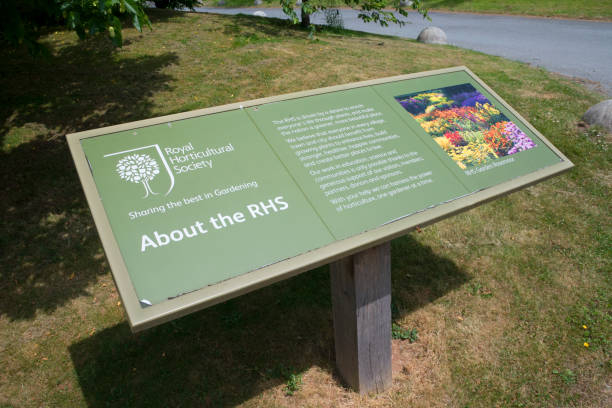
istockphoto 
istockphoto












